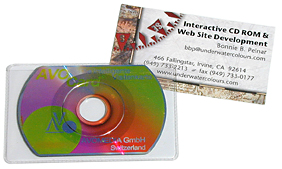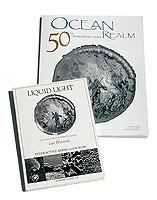Interactive
CD ROMs for Travel and Corporate Promotions
   
What better and more cost effective way is there to
show your resort, live-aboard dive vessel or destination to prospective
travellers? The CD ROM has proven to be the multimedia distribution medium
of choice. Travel agents ask for them, travelers love them. The cost to
produce and ship a CD ROM is much less than even videotapes and they can
contain so much more information.
Electronic Catalogs, Books and Brochures
 Publishers
have been printing books, magazines and catalogs for many years. Chances
are the need for the 4-color process is not going to go away in the
near future. The wave of new media options has made a significant contribution
to what is available as marketing collateral. The cost to print a 300
page full color reference manual can be from $100,000 - $200,000 depending
upon quantity and where it is printed. That same reference manual can
cost under $10,000 to publish on a CD ROM. Publishers should all be
considering this new media as an alternative to and an addition to publishing
books, manuals, catalogs and brochures. Publishers
have been printing books, magazines and catalogs for many years. Chances
are the need for the 4-color process is not going to go away in the
near future. The wave of new media options has made a significant contribution
to what is available as marketing collateral. The cost to print a 300
page full color reference manual can be from $100,000 - $200,000 depending
upon quantity and where it is printed. That same reference manual can
cost under $10,000 to publish on a CD ROM. Publishers should all be
considering this new media as an alternative to and an addition to publishing
books, manuals, catalogs and brochures.
 The
CD ROM offers so much more to the end user. You can add interactivity,
video clips, audio and animation. The impact that this will add to your
brochure is in the emotion it instills into the presentation and into
the buyers decision. The
CD ROM offers so much more to the end user. You can add interactivity,
video clips, audio and animation. The impact that this will add to your
brochure is in the emotion it instills into the presentation and into
the buyers decision.
Now the printing process takes place on the desktop.
The user prints only the information they want hard copies of. The quality
and speed of desktop laser and color printers has improved dramatically
over the past several years, while the costs have come down to a fraction
of what they cost even two year ago.
The Business Card CD ROM
The CD ROM Business Card holds up to 50 Mb of information
on a disc the size and shape of a business card. They work just like any
other CD on both Mac and PC. The contents can be a multi-media presentation,
slide show, web site, catalog, or even video!
 Stock
Photography Catalogs and Images Stock
Photography Catalogs and Images
Stock photography is always in demand and CD ROM is
the best way to present and distribute your images to potential buyers.
Today's technology allows us to provide a catalog of "thumbnail" images
that can be viewed on a computer monitor, while technical information
and keywords which can be searched and sorted. Once an image is located,
the requester may simply open it, or if a fee or licensing is required,
be prompted to contact the photographer to obtain a password to access
the high resolution scans that can be included on the same disc.
Artists Portfolios
 The Paintings
of Wyland is a good example of how an artist would use a CD ROM to distribute
and market images. On this particular CD it was important to Wyland
to include scans of the paintings so the media could use the images
for gallery publications. However, it was even more important that the
general public could view the images on a computer monitor, but not
be able to access the images for reproduction. We accomplished this
by using encryption to lock the images until Wyland provided the proper
pass key. Pass kays could only be obtained only by calling or writing
to the artist. The Paintings
of Wyland is a good example of how an artist would use a CD ROM to distribute
and market images. On this particular CD it was important to Wyland
to include scans of the paintings so the media could use the images
for gallery publications. However, it was even more important that the
general public could view the images on a computer monitor, but not
be able to access the images for reproduction. We accomplished this
by using encryption to lock the images until Wyland provided the proper
pass key. Pass kays could only be obtained only by calling or writing
to the artist.
The "Enhanced CD ROM" Combination of
CD ROM & Audio Tracks
This format allows you to combine the computer presentation
on CD ROM and audio tracks onto the same CD. Now your audience can not
only view the interactive tour of your property, but they can take the
same CD to their audio CD player to hear the music.
Copyright Protection and Information Security
It is possible to set-up special passwords to create
a "for members only" section on the disk. For example, if you
plan to distribute the CD to both the public and to your travel agents
or magazines, you might possibly have some information you want to go
to the agents, but not be accessed by the general public. This can be
done with what is called encryption. Certain files can be "locked" out
of the reach of the general public. These encrypted files will require
a unique password, provided only by you, in order to be decrypted and
used. Of course this is optional, but it does allow you to target several
different types of viewers with one CD disk.
Fingerprinting is another technology that allows you
to embed a digital code, undetectable by the human eye and without degradation
to the image. This code is carried with the image even through the scanning
and reproduction process. In the event you suspect your image has been
copied without authorization, you can retrace the source of that particular
image.
|